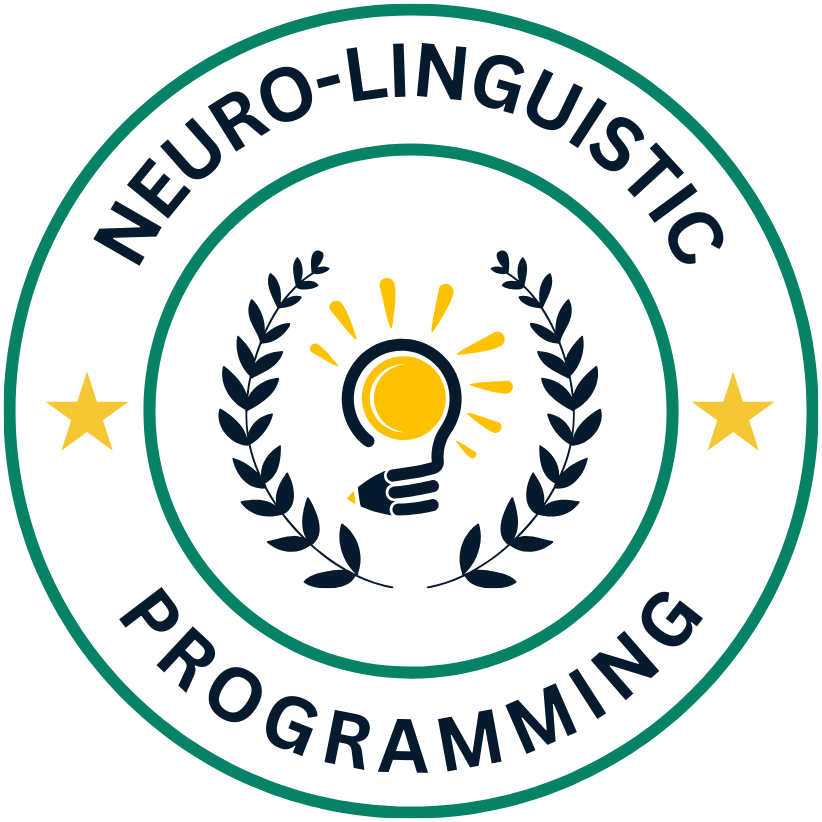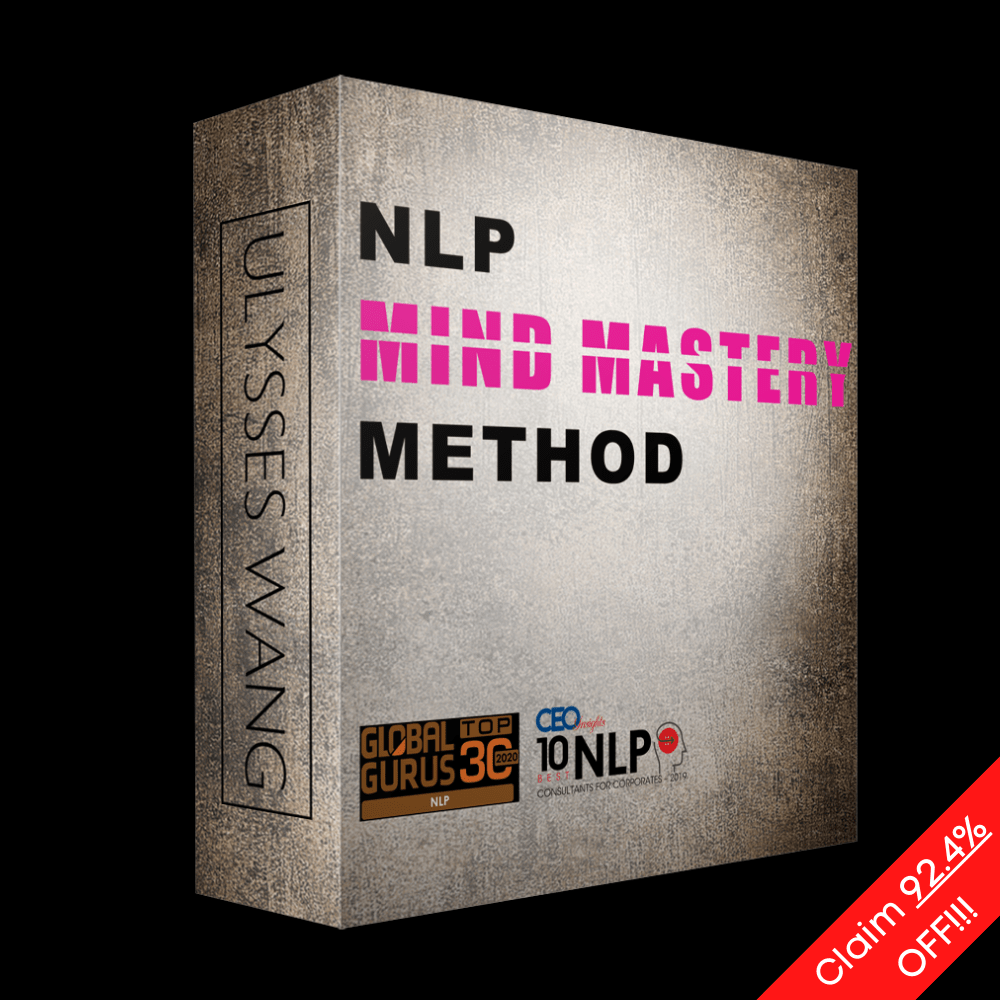Over the years, mastering the art of copywriting has become necessary for anyone looking to engage and persuade their audience effectively. By incorporating techniques from Neuro-Linguistic Programming (NLP), you can elevate your writing to new heights, making your messages resonate deeply with readers. This guide will equip you with the skills to use NLP principles, enabling you to craft compelling, impactful copy that not only grabs attention but also drives results. Let’s explore into how you can confidently transform your writing approach and stand out in the crowded digital marketplace.

Understanding Neuro-Linguistic Programming (NLP)
While the world around you is full of noise, standing out as a copywriter is important for capturing your audience’s attention. Understanding Neuro-Linguistic Programming (NLP) can provide you with the tools to craft messages that deeply resonate with your readers. By utilizing the techniques and principles within NLP, you can shape your copy in a way that influences perceptions and drives actions. This approach goes beyond basic writing skills, enabling you to connect on an emotional and psychological level with your audience.
What is Neuro-Linguistic Programming?
Programming refers to a set of techniques and modalities that explore the ways in which language and behaviors influence our thoughts and actions. Originally developed in the 1970s by Richard Bandler and John Grinder, NLP combines insights from psychology, linguistics, and cognitive science to enhance personal development and communication strategies. At its core, NLP suggests that by understanding how individuals process information, you can tailor your messaging to align with their internal experiences and beliefs.
The Importance of NLP in Copywriting
With the ever-increasing competition in content creation, leveraging NLP techniques in your copywriting not only helps you stand out but also allows you to forge a deeper connection with your audience. By employing these strategies, you can influence your reader’s emotions, manage their responses, and enhance overall engagement with your content. The subtle nuances of language can create anchors that resonate, making your messaging more powerful and persuasive.
It’s important to recognize that effective copywriting goes beyond simply presenting information; it’s about eliciting an emotional response that compels your audience to take action. By incorporating NLP principles, you enhance your ability to craft persuasive narratives that appeal to your reader’s subconscious mind, leading to higher conversion rates and more engaged clients. Understanding this fundamental link between language, thought, and behavior will give you a significant edge in your copywriting endeavors.
Key Principles of NLP and Their Application
Any successful application of NLP in copywriting hinges on a few key principles such as sensory acuity, rapport building, and anchoring. By sharpening your ability to observe and interpret your audience’s responses, you become more adept at adjusting your messaging. Establishing rapport with your audience helps create a sense of trust and understanding, allowing your words to resonate more profoundly. Furthermore, anchoring techniques enable you to create a connection between a specific emotion and a phrase or imagery in your writing, prompting desired reactions from the reader.
This understanding of how to manipulate language and perception will vastly improve your skills as a copywriter. By applying these important NLP principles, you can refine your writing techniques to create content that not only informs but also persuades and engages your audience effectively. As you explore the nuances of NLP, your copy will reflect a keen understanding of human psychology, making your words not just read, but felt.
How to Use NLP Techniques for Effective Copywriting
There’s a powerful suite of NLP techniques available that can elevate your copywriting from ordinary to extraordinary. By employing these strategies effectively, you can engage your audience on a deeper emotional level, establishing not just a connection but also a compelling reason for them to respond to your message. Whether it’s through anchoring emotions or crafting persuasive language patterns, understanding these methods can set your writing apart in a crowded market.
Anchoring: Creating Emotional Triggers
There’s a significant impact when you use anchoring in your copywriting. This NLP technique involves associating specific emotions with particular words or phrases, allowing you to evoke desired feelings in your reader. For instance, if you want to convey excitement, using words that stimulate a sense of adventure or discovery can create an emotional trigger that compels your audience to resonate with your message on a personal level. When you anchor these feelings effectively, your readers are more likely to engage with your content and take action based on the emotions you’ve stirred.
By strategically leveraging anchoring in your copy, you can turn mundane messages into impactful calls to action. A well-anchored emotional trigger can lead to increased conversions, as readers feel a compelling push towards making decisions that align with their emotions. Therefore, consider the emotional response you wish to elicit from your audience and carefully craft your message to anchor those feelings.
Language Patterns: Crafting Compelling Messages
Compelling copy often hinges on the language patterns you choose to implement in your writing. By utilizing specific NLP language structures, such as metaphors, embedded commands, and presuppositions, you can guide your reader’s thoughts and enhance their engagement with your message. Through an intentional selection of words and phrases, you effectively create a narrative that resonates, persuades, and invites action. Your choice of language can evoke curiosity, inspire trust, or instill urgency, making it instrumental in shaping your reader’s experience.
Copywriting that incorporates these engaging language patterns allows you to lead your audience through a journey while reinforcing your points. By doing so, you build anticipation and excitement around what you’re offering, ensuring each word serves a purpose and strengthens your overall message.
Mirroring: Building Connection with Your Audience
Patterns of communication can significantly enhance how well your audience connects with you. Mirroring, in the context of copywriting, involves aligning your language style, tone, and even the emotional content of your writing with that of your target audience. As you reflect the values, beliefs, and experiences of your readers, you immediately create a sense of familiarity and trust, making them more receptive to your message.
Techniques such as using similar words or phrases your audience commonly employs can foster a deeper connection. By ensuring your writing resonates with their mindset and emotional state, you can guide them toward the desired outcome, whether that’s opting into your newsletter or making a purchase.
Reframing: Changing Perspectives to Engage Readers
Little adjustments in perspective through reframing can unlock new ways of thinking for your audience. This NLP technique allows you to present information in a way that transforms the reader’s interpretations, opening them up to new insights and encouraging them to view situations differently. By reframing challenges as opportunities or obstacles as temporary setbacks, you empower your audience and create a more positive narrative around your message.
Changing how you frame your message can be particularly powerful in addressing objections or discouragements your audience may feel. By guiding them to view their needs or desires through a different lens, your writing not only engages but effectively motivates action, facilitating a deeper connection to the product or service you’re promoting.
Top Tips for Standing Out with NLP Copywriting
Your success in the crowded marketplace can hinge on how effectively you communicate with your potential customers. Here are some top tips to help you stand out using the principles of Neuro-Linguistic Programming (NLP) in your copywriting:
- Know your audience: Tailor your message to their desires and pain points.
- Use storytelling: Make your message relatable and engaging.
- Engage the senses: Evoke imagery and emotions through your language.
- Create a unique voice: Establish and maintain a strong brand identity.
After implementing these techniques, you’ll find that standing out in a crowded market becomes an achievable goal.
Know Your Audience: Tailoring Your Message
Standing out in the crowd starts with understanding your audience on a deeper level. Knowing their needs, desires, and pain points allows you to tailor your message specifically to them, making it more compelling and impactful. Use language that resonates with their values, evokes their emotions, and speaks to their aspirations. When your audience feels understood, they are more likely to connect with your message and take the next desired action.
Moreover, accessing your audience’s sensory preferences can enhance your connection even further. Whether they are visual, auditory, or kinesthetic learners, incorporating their preferred modes of communication into your copy will help you resonate with them and give you an edge over the competition.
Use Storytelling: Making Your Message Relatable
Your message can soar above the noise with the power of storytelling. By presenting your ideas through relatable narratives, you create an emotional connection with your audience. Stories allow people to see themselves in your message, transforming abstract concepts into tangible experiences. This relatability can foster trust, enhance recall, and inspire action among your audience.
Additionally, your stories should include real-life examples or testimonials that exemplify your value proposition. By integrating the experiences of existing customers, you provide social proof that can motivate potential customers to take action.
Your storytelling not only conveys important information but also humanizes your brand, enabling you to build a lasting relationship with your audience.
Engage the Senses: Evoking Imagery and Emotions
Senses are a powerful tool in your copywriting arsenal. Engaging the five senses helps to create vivid images and experiences in the minds of your audience. By using descriptive language that appeals to sight, sound, touch, taste, and smell, you can evoke emotions and make your message more memorable. For example, instead of saying “You’ll love our coffee,” you can say “Imagine the rich aroma of freshly brewed coffee enveloping you as you savor the comforting warmth in your hands.” This approach captures the imagination and draws them in deeply.
Moreover, when your audience can visualize the scenario you’re painting, it allows them to emotionally invest in your message, making them far more likely to respond positively.
Evoking specific imagery helps to create an immersive experience that lingers in the minds of your readers, driving them to act on your message.
Create a Unique Voice: Establishing Brand Identity
Making a lasting impression requires establishing a unique voice that sets your brand apart. Your tone and style should reflect your brand’s personality, whether it’s playful, professional, or daring. By maintaining this unique voice throughout your copy, you create consistency that helps reinforce your brand identity and fosters a deeper connection with your audience.
Additionally, you can leverage the principles of NLP to further strengthen your brand voice. By using specific language patterns and emotional triggers, you can amplify your messaging and ensure that it resonates powerfully with your audience.
Message consistency is key because it builds familiarity over time, and people are more likely to choose brands they recognize and feel comfortable with. By carving out a distinct voice for your brand, you ensure that it stands out in a sea of sameness.
Key Factors to Consider When Writing Using NLP
Not every copywriter utilizes the same strategies, and understanding the key factors of Neuro-Linguistic Programming (NLP) can significantly enhance your copywriting skills. Here are some crucial elements to consider when employing NLP in your writing:
- Clarity: Ensuring Your Message is Easily Understood
- Persuasion: Techniques to Influence Reader Decisions
- Authenticity: Maintaining Genuineness in Your Writing
- Emotional Appeal: Connecting with Readers on a Deeper Level
This framework encompasses clarity, persuasion, authenticity, and emotional appeal, providing a comprehensive guide to standing out amidst the competition.
Clarity: Ensuring Your Message is Easily Understood
Understood by your audience, clarity is paramount in effective communication. When your message is clear, it minimizes misunderstandings and allows your readers to connect with your content more readily. You want your writing to have inherent flow and structure, leading the readers from one idea to the next seamlessly. Always ask yourself whether your message could be better articulated and be prepared to revise until it shines in its simplicity.
Additionally, utilizing simple language and direct sentences can help maintain clarity. Break down complex ideas into manageable parts and support them with examples. The more straightforward you can make your language, the more likely your audience will resonate with what you are trying to convey.
Persuasion: Techniques to Influence Reader Decisions
One of the key components of NLP is persuasion, which directly affects how successfully you can influence your readers’ choices. By tapping into linguistic and psychological triggers, you can frame your writing in a way that aligns with your audience’s values and needs. You should identify the motivations of your target market and use compelling language to articulate solutions to their problems, driving them toward a desired action.
For instance, employing techniques such as mirroring, embedded commands, and sensory-rich language can enhance your ability to persuade. These methods allow you to speak directly to your reader’s subconscious, making them more receptive to your message. Seamlessly integrate these strategies within your copy, and you’ll find that your audience is more inclined to take the actions you want them to take.
Authenticity: Maintaining Genuineness in Your Writing
Persuasion might make an impact, but authenticity establishes trust. Readers can quickly discern inauthenticity, and it tends to erode credibility in an instant. By being genuine in your writing, you create a connection with your audience that promotes loyalty and ensures they respect your opinions. Share personal experiences or testimonials that resonate; these can foster a bond between you and your readers, enhancing their engagement with your content.
Techniques such as storytelling and transparency about your own journey can bridge the gap between you and your audience. When your writing resonates with their experiences or feelings, you foster a deeper level of connection, demonstrating that you genuinely care about your audience’s needs.
Emotional Appeal: Connecting with Readers on a Deeper Level
Persuasion through emotional appeal can create powerful connections with your readers. Emotions drive human behavior, and when you tap into your audience’s feelings, you appeal to their subconscious desires and fears. Crafting a narrative that speaks to their emotions can help your message resonate on a much deeper level, prompting them to act based on how they feel rather than merely logical reasoning.
It’s crucial to be attuned to the emotional state of your audience. Address their pain points, hopes, and aspirations within your writing to create a strong emotional resonance. Doing so will not only capture their attention but also inspire them to read further and engage with your message profoundly.
How to Test the Effectiveness of Your NLP Copywriting
Now that you have crafted compelling NLP copywriting, the next step is to assess its effectiveness. Testing your copy will help you understand what resonates with your audience, allowing you to refine your strategy and enhance your messaging. By implementing specific testing methods, you can gather valuable data to make informed adjustments to your copywriting approach.
Analyzing Reader Engagement: Metrics That Matter
Analyzing reader engagement is a crucial aspect of measuring the effectiveness of your NLP copywriting. Focus on key metrics such as click-through rates, conversion rates, and time spent on the page. These metrics reveal how well your audience is responding to your messaging. For example, a higher click-through rate may indicate that your attention-grabbing headlines and compelling calls to action are working effectively. Conversely, if readers are leaving your page quickly, it may signal that your content needs to be more engaging or relevant to their interests.
A/B Testing: Experimenting with Different Techniques
Test different variations of your copywriting through A/B testing to discover which messages resonate most effectively with your audience. By creating two or more versions of your content and sharing them with different segments of your audience, you can pinpoint which elements lead to better engagement and results. This experimentation might involve altering your headlines, adjusting the tone, or even shifting the structure of your messaging. Analyzing the outcomes will empower you to optimize your copy based on solid evidence rather than mere assumptions.
Your A/B tests should be systematic and focused on specific elements of your copy. For instance, you may want to experiment with different calls to action in your email campaigns, or try various approaches to storytelling in your blog posts. Over time, as you collect data, you’ll be able to identify patterns that inform your overall strategy and lead to more effective communication with your audience.
Soliciting Feedback: Gaining Insight from Your Audience
Insight into how your copy is perceived can be invaluable. Solicit feedback directly from your audience through surveys, polls, or direct interactions. By asking thoughtful questions, you can gauge their understanding, emotional response, and overall impression of your copy. This feedback not only highlights what is working well but also reveals areas for improvement. Listener engagement in this way enriches your understanding of audience needs and preferences, enabling you to create more targeted and effective messaging in the future.
Gaining insight from your audience doesn’t stop with formal feedback mechanisms. Pay attention to informal comments or discussions that arise around your content, whether through social media or community forums. Understanding their genuine thoughts will enhance your connection with your audience and sharpen your copywriting skills, ensuring you communicate with resonance and authority moving forward.
Long-term Strategies for Mastering NLP Copywriting
Unlike many skills that can be acquired quickly, mastering Neuro-Linguistic Programming (NLP) copywriting requires a commitment to long-term strategies that build your proficiency over time. By implementing these techniques, you can stand out in a crowded market, effectively capturing your audience’s attention and influencing their decisions. This chapter outlines vital strategies that will serve as the foundation of your NLP copywriting journey.
Continuous Learning: Staying Updated on NLP Techniques
The world of NLP is constantly evolving, with new techniques and research emerging that can enhance your copywriting skills. Staying updated on the latest advancements enables you to integrate fresh ideas into your work and refine your approach. Follow reputable sources, attend workshops or webinars, and read relevant materials to ensure that your knowledge remains current. The more informed you are, the more effective your copy will become.
The key is to cultivate a habit of continuous learning. Consider joining professional organizations or online communities where NLP practices are discussed. Engage in discussions and explore new concepts that others share. By surrounding yourself with proficient practitioners, you can enhance your understanding and gain insights that may not be available through traditional learning methods.
Practicing Writing Regularly: Building Skill Over Time
Techniques to improve your copywriting skills revolve around consistent practice. Writing regularly not only hones your abilities but also allows you to experiment with different NLP techniques in your copy. Set daily or weekly writing goals, whether it’s drafting Facebook ads, landing pages, or blog posts. The more you write, the more comfortable you will become in weaving NLP principles into your narrative.
Strategies for building this routine can include a dedicated writing schedule that aligns with your personal and professional commitments. Consider creating prompts or joining a writing challenge to fuel your motivation. By establishing a consistent practice, you will notice significant growth in your skills, leading to more persuasive and effective copy over time.
Networking with Other Writers: Sharing Insights and Tips
For aspiring copywriters, engaging with others in your field can provide valuable insights into effective NLP strategies. Networking with fellow writers allows you to exchange experiences, share best practices, and discuss challenges you may encounter. You can join local writing groups, participate in online forums, or even attend industry conferences to broaden your network. These connections can lead to collaborative opportunities and a deeper understanding of NLP techniques.
- Find mentorship opportunities within your network to learn from experienced professionals.
- Share your work with peers for constructive feedback that sharpens your skills.
- Engage in discussions on various platforms to gain diverse perspectives on your copywriting approaches.
Recognizing the importance of collaboration within the writing community can provide you with a wealth of knowledge and resources. You’ll discover new strategies and refine your existing skills through shared experiences. By investing time in building and maintaining these connections, you’ll enhance your growth trajectory and ultimately contribute meaningfully to the field of NLP copywriting.
Regularly participating in networking opportunities can lead to mutual support among writers. Consider setting aside time each week to connect with fellow writers, whether through social media, email, or in-person meetups. You may discover emerging trends, innovative techniques, and even potential partnerships that could enrich your NLP copywriting practice. Recognizing the value that such relationships hold is vital for your long-term success in this dynamic field.
Summing up
As a reminder, utilizing Neuro-Linguistic Programming (NLP) in your copywriting can significantly elevate your ability to connect with your audience and stand out in a crowded marketplace. By incorporating techniques such as mirroring language patterns, appealing to different sensory modalities, and using embedded commands, you can craft persuasive messages that resonate on a deeper emotional level. It’s important to remember that the goal is not just to sell a product or service, but to create a genuine relational experience that draws your audience in.
To take your copywriting skills to the next level, ensure you continually refine your understanding of human behavior and communication. Embrace the principles of NLP, and you will find that not only does your writing become more impactful, but your ability to influence and inspire action in your readers will improve tremendously. For more insights on how to apply these strategies effectively, consider exploring resources on Neuro-Linguistic Programming (NLP) in Copywriting. With dedication and practice, you can turn your copy into a powerful tool that stands out and truly captivates your audience.
FAQ
Q1: What is Neuro-Linguistic Programming (NLP) and how does it relate to copywriting?
A: Neuro-Linguistic Programming (NLP) is a psychological approach that involves understanding and using language patterns to influence thoughts, behaviors, and emotions. In the context of copywriting, NLP techniques can help you create compelling messages that resonate with your audience on a deeper level. By recognizing how people process information and make decisions, you can tailor your copy to evoke specific responses, leading to higher engagement and conversion rates. Key NLP strategies for copywriting include anchoring, reframing, and utilizing sensory language that appeals to the reader’s emotions and experiences.
Q2: Can NLP techniques enhance the effectiveness of my marketing copy?
A: Yes, integrating NLP techniques into your marketing copy can significantly enhance its effectiveness. By leveraging NLP principles, you can craft messages that connect with your audience’s subconscious, encouraging them to take the desired action. Techniques such as mirroring language, using embedded commands, and establishing rapport through language patterns can create a more persuasive and relatable message. This tailored approach not only helps your copy stand out but also builds trust and credibility, making it more likely that potential customers will respond positively to your offer.
Q3: What are some practical NLP techniques I can apply in my copywriting to stand out?
A: There are several practical NLP techniques you can apply to your copywriting to enhance its impact. Some of these include:
1. **Anchoring:** Use specific words or phrases that evoke positive emotional states in your audience. This can influence their perception of your product or service.
2. **Sensory Language:** Incorporate vivid imagery and descriptive language that appeals to the five senses, allowing your readers to envision the benefits they will experience.
3. **Storytelling:** Craft engaging narratives that incorporate relatable characters or situations, which can help your audience see themselves in the story and create a personal connection to your message.
4. **Reframing:** Present information in a way that alters the audience’s perspective, helping them to see the value or benefit in a new light.
By utilizing these techniques consistently, you can not only make your copy more compelling but also ensure it stands out in a crowded marketplace.



